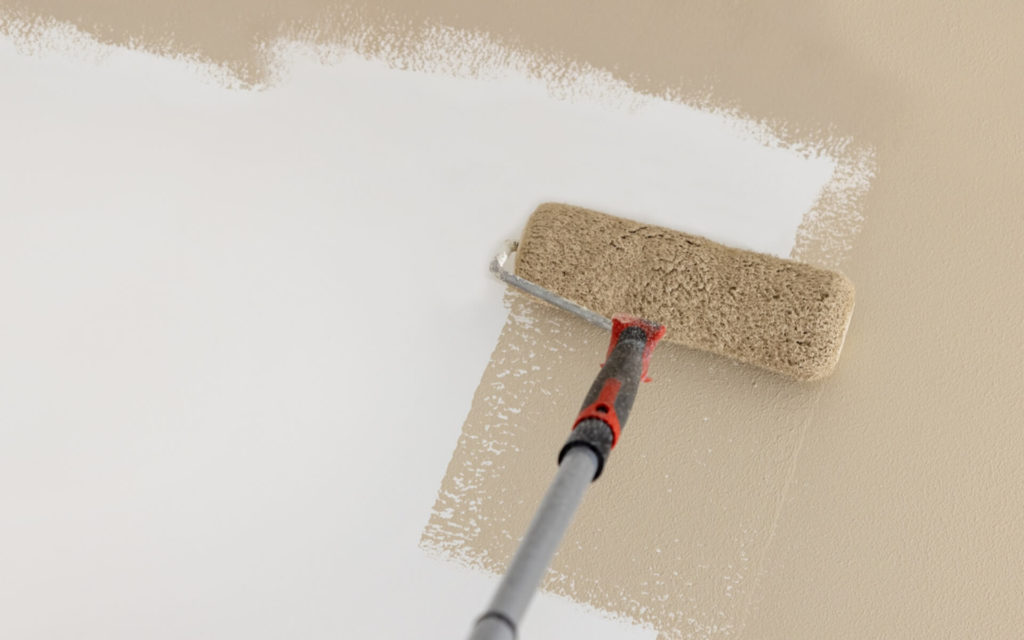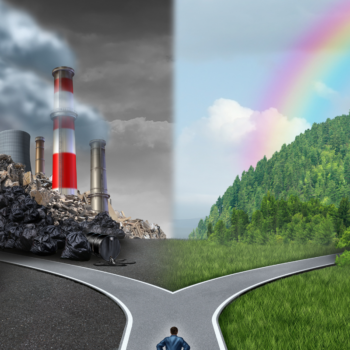|
|
It’s hard to avoid chemicals. They’re in nearly everything humans touch, ingest and inhale throughout the day. However, some particles are more harmful than others. Volatile organic compounds (VOCs) are some of the worst offenders for people and the planet.
They compromise the air, but they’re hard to elude with many products. We’ll outline the impact of VOCs on the environment and human health.
Busy? Try the speed read.
- Volatile organic compounds (VOCs) are emissions from ordinary household goods.
- Sources include paint, cleaning products, gasoline, and flooring.
- Side effects depend on the amount of exposure and VOC concentration in the room.
- Long-term exposure can lead to liver and kidney damage and problems with the central nervous system.
- Experts are concerned with VOCs in the air because they form ground-level ozone during reactions with nitrogen oxide.
- Some products are more friendly to humans and the environment because they reduce the impact of VOCs.
Dig deeper → 5 min
What Are VOCs?
VOCs are organic chemicals that solid or liquid products emit into the air as a gas at room temperature. Small amounts of VOCs might not be harmful, but increased amounts can harm humans and the environment. The most common carbon compounds people use are butane, propane, ethanol, and others.
These chemicals aren’t toxic until they vaporize. Some companies have created low-VOC products, but avoiding them in everyday life is challenging. Humans spend much of their day inside, which is where VOCs tend to be. Studies show the impact of VOC pollution tends to be between two and five times higher inside a house than outside, no matter the location.
What Products Have VOCs?
VOCs are more common than one may think — they’re in numerous products people use daily. For example, people can find VOCs inside the gasoline they put inside their cars. The impact of VOCs happens when people fill their cars with fuel. The compounds are much higher at gas stations because of evaporation and spills. Patrons may experience exposure to benzene, toluene, xylene, and more, leading to a VOC concentration about 10 times higher than inside a home.
Another typical product leading to VOC exposure is paint. People encounter paint at home, work, school, or any facility, so avoiding it is hard. One of the most common VOCs in this product is formaldehyde. This compound is also in adhesives, caulks, and foam in furniture. Fresh paint’s VOC emissions are higher than older paint jobs.

People like to keep their homes clean to stop the spread of germs. They often use cleaners with chemicals to sanitize areas in the kitchen, bathroom, and more. However, sometimes they do more harm than good. For example, chlorine bleach has chloroform and carbon tetrachloride. These products do their cleaning job, but they also show the negative impact of VOCs.
How Are VOCs Harmful to Humans?
People encounter VOCs daily, but the side effects depend on the amount of exposure and VOC concentration in the room. In the short term, VOCs irritate the eyes, nose, and throat. They can also give people headaches, nausea, and reduced coordination ability.
In the long run, the consequences of VOCs can be adverse or fatal — exposure can lead to liver and kidney damage and problems with the central nervous system. Some VOCs have known carcinogens. For example, benzene and formaldehyde are two VOCs that cause cancer. Researchers suspect TCE, chloroform, and naphthalene also cause cancer, but more research is necessary.
How Are VOCs Harmful to the Environment?
VOCs can directly harm humans in the short and long term with their emissions and can indirectly cause trouble by damaging the environment. Pollution is a direct negative impact of VOCs on the environment. Experts are concerned with VOCs in the air because they form ground-level ozone during reactions with nitrogen oxide. Ground-level ozone is a concern in urban environments, especially for those who have asthma.
In the long term, scientists are concerned about VOCs and their contribution to global warming. Its effects have become apparent on the supply chain, ocean temperatures, melting glaciers, and more. Methane is a prominent contributor to global warming, and it comes from the agricultural, oil, gas, and coal mining industries, among others. These companies often release methane and VOCs and raise Earth’s surface temperature.
What Are VOC Alternatives?
Whether inside or outside, humans will have a difficult time avoiding VOCs. However, there are ways people can reduce their exposure. Some products at the store are more friendly to humans and the environment because they reduce the impact of VOCs. These items include:
- Electric cars: Electric vehicles (EVs) are slowly rising in popularity worldwide. Manufacturers like Toyota have spearheaded the battery-powered vehicle movement for over two decades. EVs remove the need for gasoline and lower emissions from the VOCs in petrol. Even luxury car brands have migrated toward EVs for their reduced environmental impact.
- Paint: Paint is one of the most common sources of VOCs that people encounter. However, they can lower their exposure with low-VOC paints. These products decrease the number of contaminants in the ozone layer. The ozone layer has recovered in the last few decades, and moving to low-VOC paints will further the cause.
- Cleaning products: Other prevalent sources of VOCs in everyday life are cleaning products. Switching to environmentally friendly cleaning items would significantly reduce VOC exposure and human health problems in the home.
- Flooring: The negative impact of VOCs stretches to less-obvious places, such as flooring. Homes with nylon or vinyl are more prone to a high VOC content, and hardwood flooring typically has lower VOCs as long as the company doesn’t treat it with terpenes.
Lowering VOC Exposure
Nowadays, it seems like everything has positive and negative health effects. From morning coffee to disinfectant spray, humans have a hard time determining good and bad. People don’t think about VOCs every day, but they should.
Reducing exposure to VOCs can positively affect health over time, especially for those with respiratory problems. Low-VOC products improve human and environmental health.













No Comments